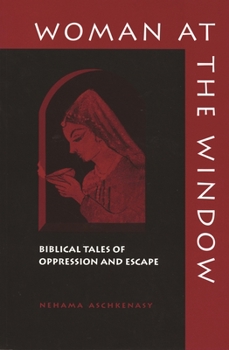Woman at the Window: Biblical Tales of Oppression and Escape
Select Format
Select Condition 
Book Overview
In creative, analytical retellings of biblical tales about women, Aschkenasy demonstrates how recurring situations, dilemmas, and modes of conduct represent the politics of women's realities in premodern civilization--how women's lives in those times were characterized by social and legal limitations which some accepted and others challenged.
Format:Paperback
Language:English
ISBN:0814326277
ISBN13:9780814326275
Release Date:October 1998
Publisher:Wayne State University Press
Length:184 Pages
Weight:0.56 lbs.
Dimensions:0.4" x 6.0" x 9.0"
Customer Reviews
1 rating
This is one of the best analyses of Biblical women I've read so far.
Published by Thriftbooks.com User , 18 years ago
I had to do a lot of digging to find scholarly books about Biblical women. Unfortunately, I've never found a book like this in a religious book store. I did a project on the concubine of Gibeah/pilegesh haGiveh in Judges 19-20 and that prompted my interest in this book. This book is very interesting, scholarly, and quite readable. Aschkenasy's main preoccupation is the fenestrated woman, i.e. the woman confined to the "safety" of the home only able to peer out of the window. She also examines the role that women sometimes play in perpetuating their own exploitation by examining Deborah's song which mocks Sisera's mother. Deborah imagines Sisera's mother sitting in the window thinking that her son been delayed because he had to divide up the spoils; commodities which include women. Aschkenasy gives a breakdown of the original Hebrew language of Deborah's Song. She gives a very perspicuous analysis of the elements of time and space in the stories as they relate to the fate of the women who venture out of their domain, like the concubine, Dinah, Michal, Abigail, and Tamar. In the last chapter she examines the power of semantics which, according to some linguists and educational psychologists, creates reality. She examines the powerful speech of Eve, Hannah, Zelofhad's daughters, and Ruth.





